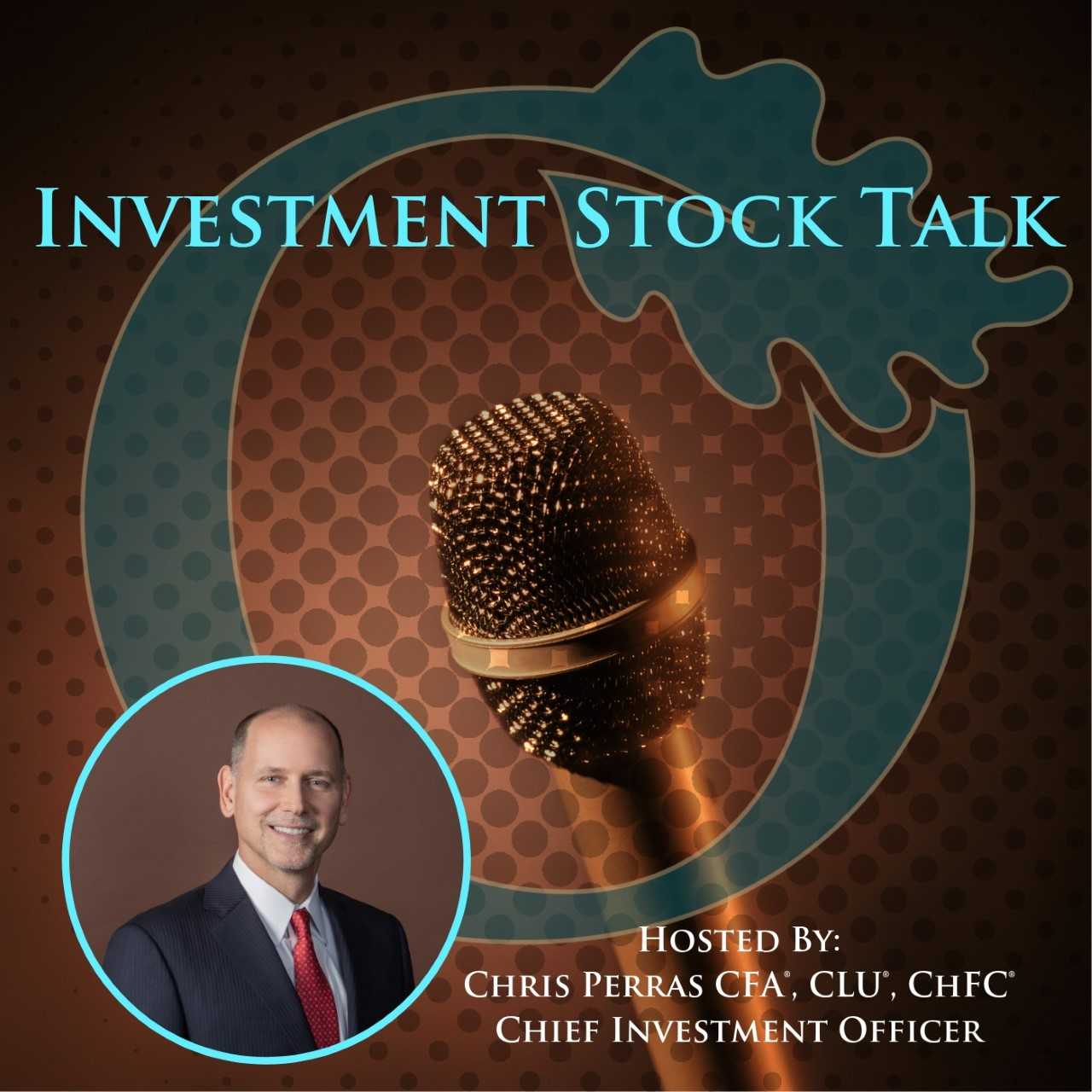Jackson Hole “Real”ly “Interest”ing | Stock Talk Podcast
In the second half of July, stock markets moved sharply higher into mid-August on the hope for a shift towards an easier Fed in 2023. Real interest rates were falling then, having peaked on June 15. The markets had interpreted Powell’s July comments to signal the possibility of a downshift in the pace of rate hikes. And the S&P500 ran higher into August option expiration near the S&P500 200-day MVA around 4300. Those gains were already reversing into Jerome Powell’s 8-minute speech at Jackson Hole on Friday, August 26. Since then, virtually every asset market in the world has moved lower on a price basis. Stocks lower, Bond prices lower. Commodity prices ex natural gas? Lower. What gives?
I am Chris Perras with Oak Harvest Financial in Houston, and welcome to our weekly stock talk podcast, keeping you connected to your money. Before we get into this week’s topic, “Jackson Hole, Jerome Powell makes it Really Interesting,” not in a good way. Please take a moment to click on the subscribe button and click on the notification bell so you will be alerted when our team uploads our latest content.
In case you missed it, Jerome Powell did pretty much what everyone who works for him said he would. He reiterated the central bank’s commitment to fighting inflation as its top priority over economic growth. He did this in a very direct and straightforward manner. He referred to the “unfortunate costs of fighting inflation.” Those costs are a pain to the USA economy in the form of further economic slowdown, a weaker consumer, lost jobs, and higher unemployment rates. He brought up former Fed Chairmen Paul Volcker’s name more than once, and he pledged that the central bank will “use our tools forcefully” to attack inflation that is still running near its highest level in more than 40 years.
Apparently, more than a few investors and shorter-term traders were hoping Powell would give some signal that given the shorter-term peaking goods inflation, higher interest rates would be a short-term phenomenon. That the Fed would rapidly raise rates, get inflation under control, and then go back to easy-money policies.
Into Powell’s speech on Friday morning, the computer trading algorithms were screening for one word. That word? The magic word that Powell didn’t say. “Pivot.” As in, “pivot” and move away from monetary tightening in 2023. And with that, the computer algorithms took over on a very illiquid Friday during summer. The Dow plunged more than 1,000 points on Friday, Its worst day since May, and stocks and most other investable assets have traded poorly ever since his speech.
The Fed’s next meeting about rate hikes isn’t till September 21, during what historically is the worst month for investor returns in stocks. Until then, markets will have several key economic reports to digest. There will be more data for the Fed to review. What the market decided it didn’t want to listen to in Powell’s speech was this part; Powell said the September rate decision “will depend on the totality of the incoming data and the evolving outlook. At some point, as the stance of monetary policy tightens further, it likely will become appropriate to slow the pace of increases.”
I’ll translate this economic speak for you. He said we will be “data dependent.” He said that if the facts we look at change as laid out by the data, we will change our minds, direction, and actions. But viewers, computer algos, and short-term traders don’t care about any of those words, on a Friday, during an illiquid trading day, in the heat of summer! No, those computers do one thing and one thing only. They get in there and Sell Mortimer Sell. And the buyers do what? Well, they step back. They pull their bids. They pack it in early for the weekend and head to the Hamptons. And they watch. Why? Because one of the basic trading rules on the street is markets never bottom on a summer Friday.
So, let’s look at what’s going on beyond straight lines down in markets on a Summer Friday.
Bigger picture, in many ways, the Fed is already getting some of the outcomes they are seeking. That’s what the real-time data says. Money supply growth has tanked in the last nine months after rising exponentially post-pandemic. Lower M2 money supply growth usually leads to inflation by 9 to 12 months. The economy has materially slowed in 2022. Housing demand is falling off rapidly. The labor market slowdown is underway as companies re-evaluate hiring, and the jobs market is cooling with a rash of summer layoff announcements ranging from technology companies to auto manufacturers such as Ford. Layoffs are not inflationary for wages. These things are happening with the economy coming off consecutive quarters of negative GDP growth in the first and second quarters, which remains my definition of a recession, even if mild.
So, if things are heading in the Feds’ direction? What is going on with stocks? Why are they so weak since Powell’s speech? Qualitatively, after exhaling for two months and believing in a soft-landing scenario for 2023, the markets are once again concerned about the increased prospects of a recession. Between the rapid, short-term interest rate increases over the last nine months and soon to commence quantitative tightening program, central banks are sucking liquidity out of the markets. Higher rates in the USA are enticing dollars to return to the USA as risk capital returns home in a bid for safety. A stronger dollar hits U.S. exporters and multinationals’ earnings power.
Quantitatively, it’s best to look behind the scenes, away from stocks, and look into the bond market to see why the overall stock market continues to struggle even with goods inflation looking to be peaking.
We’ve discussed this topic more than a handful of times over the last four years. Remember that nominal Treasury interest rates the ones quoted on T.V., like a 10-year Treasury bond that’s used to set your mortgage rate, have two components. They have the inflation expectations component and the “real yield” component. Add them together, and you get the “Nominal” rate.
Take a look at the 10-year nominal interest rates chart over the last 18 months. 10-year interest rates. Up and to the right from about 1.35% last December when stocks peaked, to 3.5% in Mid-June when the SP500 hit 3650. Yields now sit around 3.25%.
Higher overall interest rates increase the cost of doing business for most companies while lowering P.E.’s.
However, we want to break the 10-year nominal interest rate into its two components and further discuss it. The first part is the 10-year inflation breakeven component.
Here it is. This is the markets expectations on where it expects inflation to settle ten years from now. As you can see, it peaked out at over 3% in April and has since fallen back to about 2.45%. One can pull up the 2-year, 5-year, and 30-year inflation expectation numbers if you wanted, but if you did, what you would see is that they are all starting to coalesce and triangulate to around 2.5%.
What I find the most interesting is that the 2-year inflation breakeven has already fallen from 5% at the end of March to under 2.5% five months later. It’s at 2.3% as of this writing. If this was a stock, down over 50% in 5 months, the news anchors on T.V. would be calling this a “collapse.” It’s already back to early 2021 levels and nearing what the Fed calls their long-term inflation goal. That it’s already been cut in half in 5 months should be a good real-time indicator that inflation is going to continue lower in the coming 3, 6 and 9 months,
Something else I want to point out to those of you out there who like to invest or trade commodity stocks like copper or gold. Here’s a chart of one of the world’s largest and best copper miners. Freeport McMoRan. You’ve probably heard of the massive future demand for copper given its use in Electric Vehicles, as each vehicle requires 2.5x the amount of copper as a standard internal combustion engine. Compare these two charts.
What you’ll see is they look almost identical with Freeports stock peaking on March 25, the Exact same day that inflation breakeven rates in the bond market peaked. So, I ask, when you are buying Freeport stock, when you are buying that E.V. copper demand theme, are you really buying a copper and gold mine? Or are you just buying some ticker that a computer is trading as a byproduct of inflation interest rates?
Which brings me to our third, final, and, I believe, most important interest rate chart. That’s the chart of real interest rates. Also called the TIPs yield. This is the component of longer-term rates that drive a stock’s valuation and the equity risk premium of the overall market. This is the 10-year real rate chart.
If one were to overlay a chart of the overall SP500 on this real yield chart, one would see they look almost identically opposite. The market’s big late first quarter 2022 rally came as real rates dropped for about two weeks. Outside of that, the SP500 headed almost linearly lower in the second quarter until June 15. When? When Real interest rates peaked short term. And now, ever since mid-August, as the real rate has begun rising again, the overall market has struggled. In fact, on Friday, August 31, the short-term 2-year real yield rose over 25bps in one day to 1.08%. That is a huge move and is far too fast for managers and portfolios to handle short term. Growth stocks, whose main value is determined years if not decades into the future, have been the worst performers since rates troughed again mid-August, while boring utilities, staples, and lower growth names, while mostly down, have done better.
As it has been all year, it’s a sloppy, choppy rotational mess, and right now, it remains a “REAL’ly “Inter” esting and difficult environment for the stock market as the market wrestles with how slow the economy will get as the Fed continues along its 4th quarter rate increases. The good news is that we don’t believe the Fed needs to actually “pivot” to lower rates to get the markets moving higher once again. We are currently of the belief that given the employment picture and slow growth we are in; the market would exhale greatly with just a general roadmap of slower interest rate increases over the coming six months instead of more 75 basis point increases on the table. The real-time data behind the scenes says that the Fed is succeeding in lowering inflation. Investors want to know that the Fed sees it and believes it, too, and is willing to take their foot off the gas of monetary policy tightening as inflation slows.
If the ongoing market volatility is making you feel uneasy, give us a call, and schedule a meeting with an Oak Harvest advisor. Our team does have insurance-based tools that do not have the volatility of public markets. However, we remind you, that these investments may also have lower long-term expected returns.
At Oak harvest, we think our clients are best served by us helping them plan for their future needs, instead of focusing on the past. The future and stock markets are always uncertain and that is why our retirement planning teams plan for your retirement needs first, and your greed’s second.
Give us a call to speak to an advisor and let us help you craft a financial plan that helps you meet your retirement goals. Call us here at (877) 896-0040 and schedule an advisor consultation. We are here to help you on your financial journey into and through your retirement years.
I’m Chris Perras, and from everyone here at Oak Harvest Financial Group, have a blessed weekend.

Chris Perras
CFA®, CLU®, ChFC®
Chief Investment Officer, Financial Advisor
Chris is a seasoned investment professional with over 25 years of experience working with some of the most successful money management firms in the world. Chris has made it a point in his career to adapt as the market landscape changes, seeking to utilize the appropriate investment strategy for a given market environment. His transition from managing billions of dollars at the institutional level to helping individuals and families retire is guided by a desire to see first-hand the impact he is making in the lives of clients at Oak Harvest.






